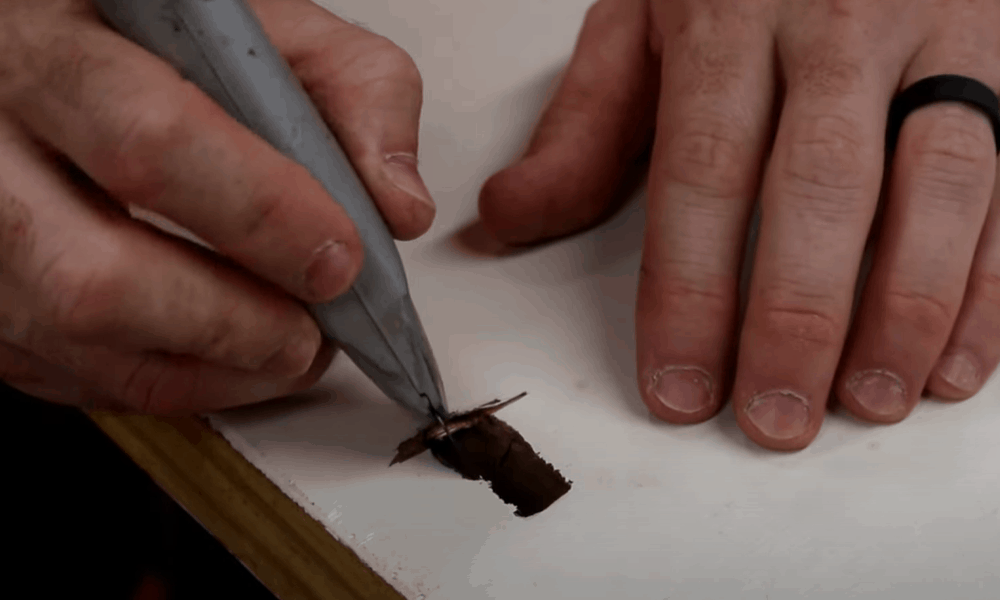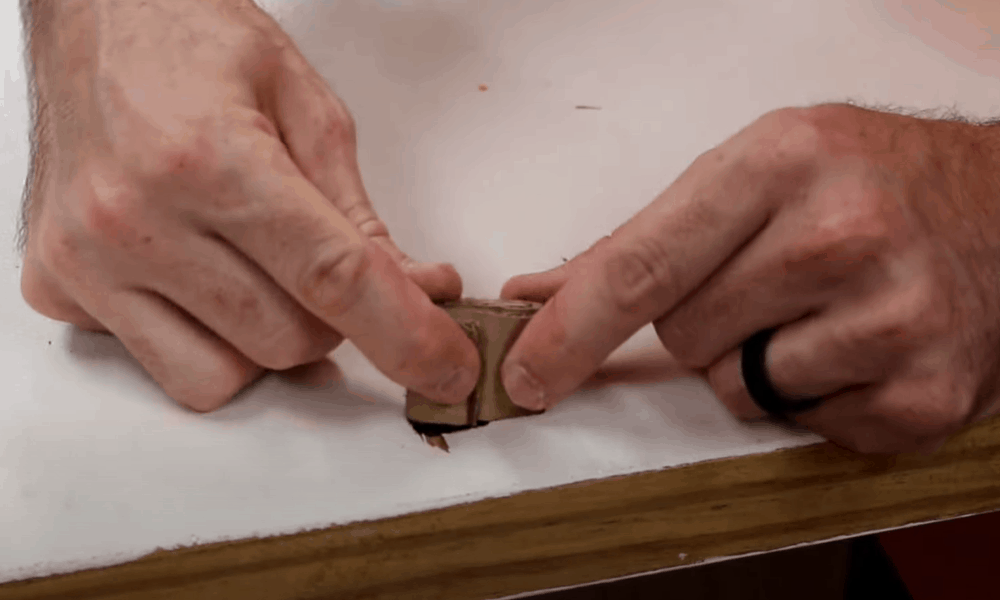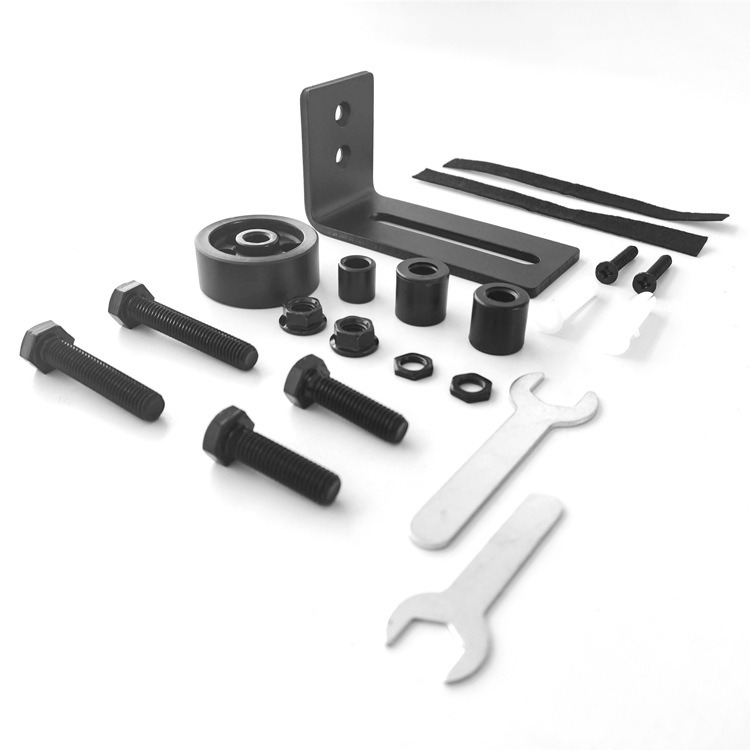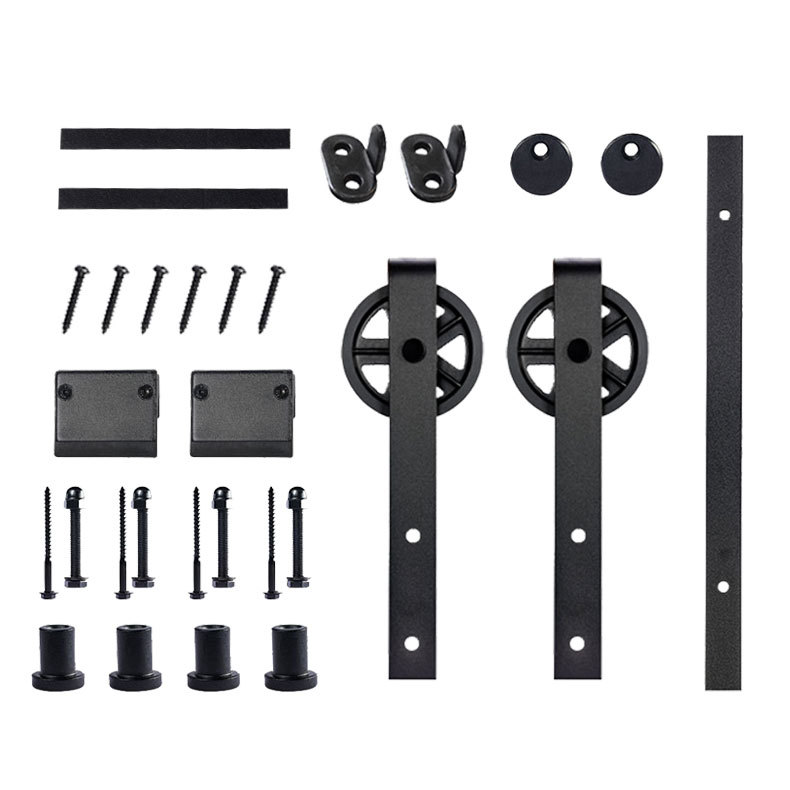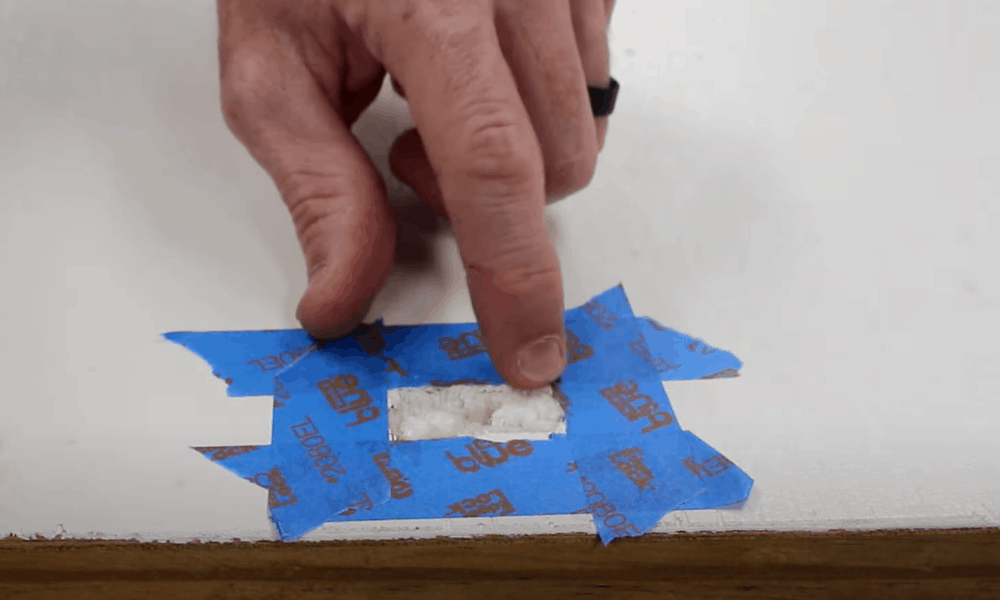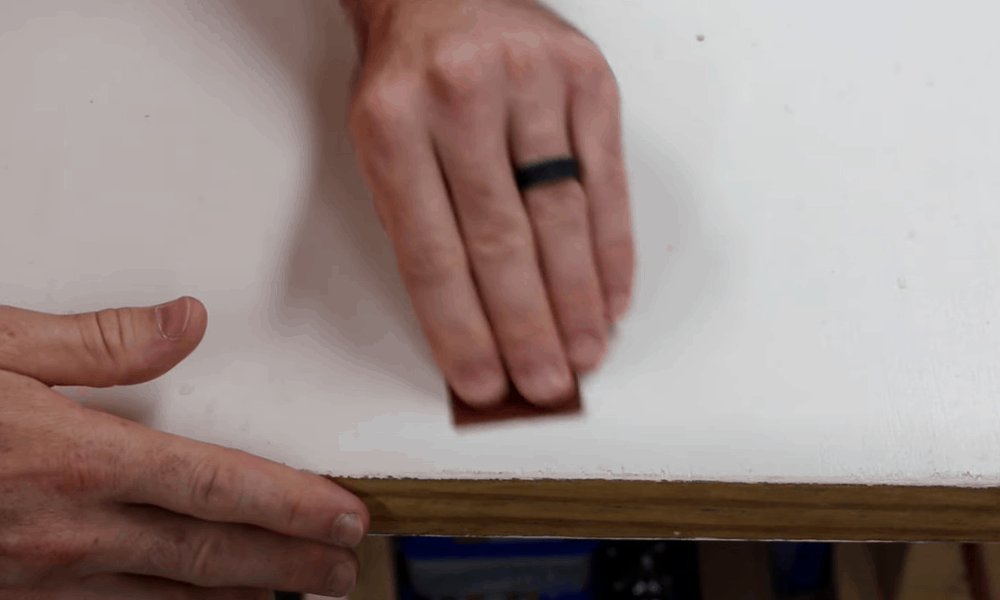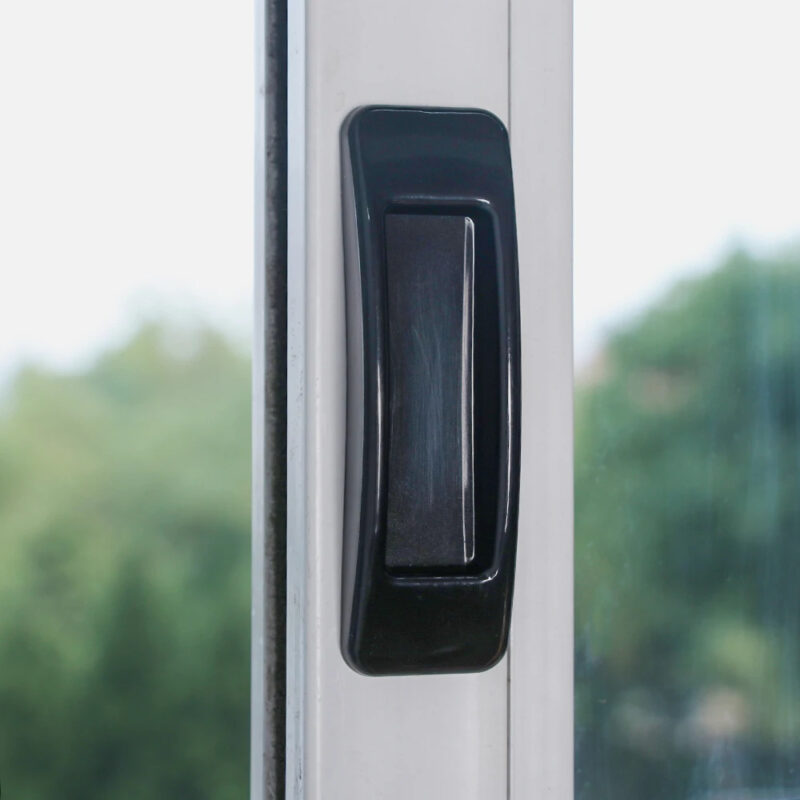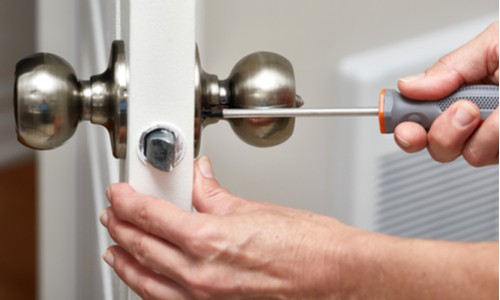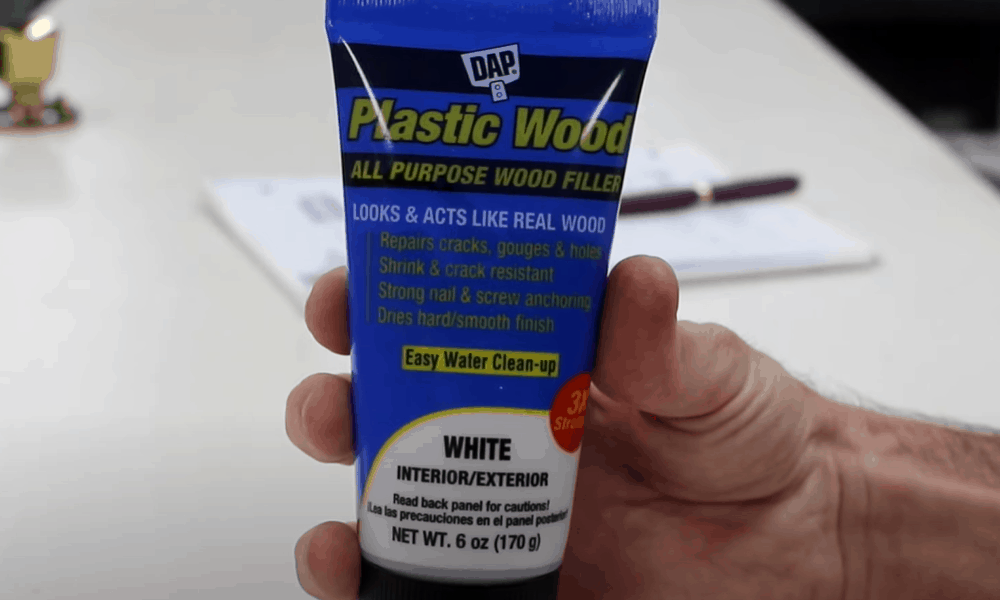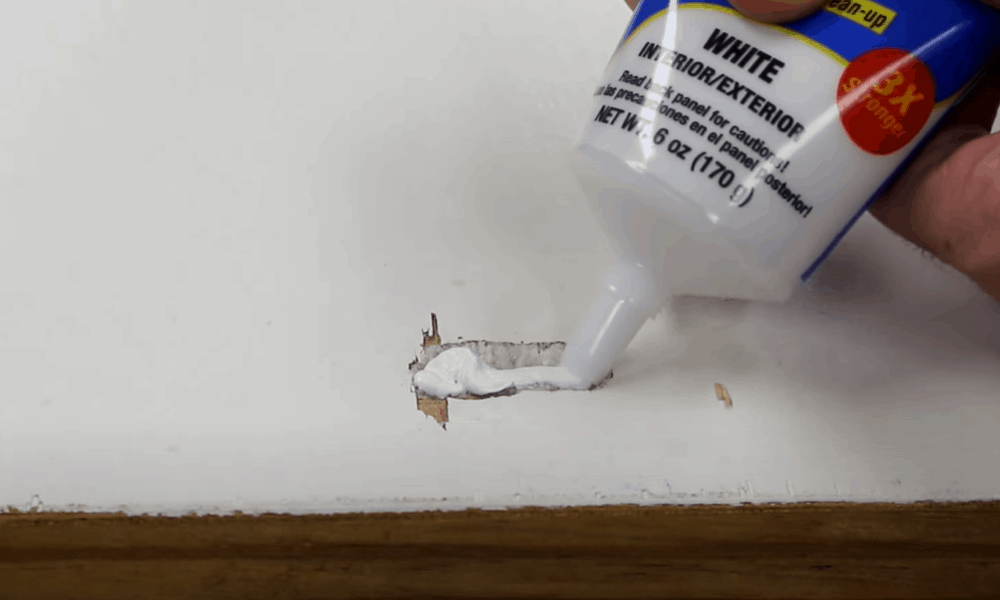How to Fix a Hole in a Door? (Step-By-Step Tutorial)

Hollow-core doors offer a lot of benefits. They are more affordable than their counterparts made of solid wood, let you paint them as per your home’s interior and are able to withstand normal wear and tear. That’s where the good news end.
Unlike solid wood doors that can take a beating without showing any signs of abuse, one unfortunate accident (like a screwed-in hook) can puncture a hole in hollow doors. Such a gap not only looks bad, but it can also damage the door’s integrity if left unattended for long. But you don’t need to worry
That’s because the steps for how to fix a hole in a door are easy to follow. You can check out below video to verify this claim. All you need to have are a few inexpensive tools and a couple of free days and you can patch up the hole on your own. There’s no need to pay a home repairer to do the job.
Before you fix the hole in the door
Here’s what you need to do:
Prepare the hole
Follow the steps to prepare the hole for repairing:
- Clean the hole: Regardless of how the door was damaged, the hole might have some fragments or loose splinters that you cannot repair. It’s best then to remove them away using a utility knife to get a clean hole that doesn’t have any rough edges.
- Pack it with paper towels: Grab a few paper towels, bunch them together and stuff them into the hole. You can also stuff the hole with some tissue paper or something lightweight if you don’t have paper towels.
- Spray expanding foam insulation into the hole: Available in a spray can with a long nozzle, expanding foam insulation will protect the hole from attracting debris. Point its nozzle towards the hole and keep on spraying until the hole is full. Let it dry overnight.
- Remove the excess foam: The excess spray foam will have expanded outside through the hole, both on the inside and the outside. Remove it by running a utility knife down the face of the door. No foam should be sitting 2.5mm below the face of the door afterward.
- Apply auto-body filler into the hole: Mix 1 part of a hardener catalyst with 2 parts of an auto-body filler. Use the edge of a utility knife to lubricate the hole with the resulting mixture. There shouldn’t be any gaps in the hole once you’re done smearing it with the filler.
- Let the filler dry: Most auto-body fillers available on the market have a 1-hour drying time after which they become hard to the touch. But if you want to be extra careful, check the instruction manual of your filler to determine how long it will take to dry fully.
- Sand down the door: The auto-body filler might have accumulated in the form of a layer over the door. You need to sand it down with 100- to 120-grit grit sandpaper. Keep on sanding until the surface where you applied the filler is level with the rest of the door.
What you’ll need for repairing holes in doors
Here’s a list of all the tools and equipment you’ll need to repair and patch the hole:
- Heavy gloves
- 320-grit sandpaper and 220-grit sandpaper
- Wood filler
- Putty knife
- Sponge or damp paper towel
- Vacuum cleaner
- Screwdriver
- Hammer
- Paint or wood stain
- Paint roller
Step-by-Step Guide fox fixing hole in door
Follow these steps to fix a hole in a door:
Step 1: Sand away paint and loose splinters
Wear a pair of heavy gloves and sand down all those areas where the wood is splintering and/or the paint is peeling. Thoroughly clean the entire area once you’re done sanding it. Bear in mind that you’re going to patch the area in the upcoming steps.
Step 2: Apply wood filler onto the scratched area
Squeeze a bead or two of wood filler onto the utility knife and then spread it over the area you have just cleaned. Keep on spreading the filler until you achieve a smooth finish. The area where you’ve applied the filler should be at the same level as the rest of the door.
Afterwards, let the filler dry. It might need between 15 minutes and half-an-hour to settle into all of the scratches and become solid to the touch. Don’t let anybody or yourself touch the filler during the drying time.
Pro Tip: Wood filler is available in one of two configurations. You can either get it in a pre-mixed form, or it will be available in 2 separate parts that would need mixing. Provided it’s the latter that you have purchased, follow the instructions given in its manual to mix it and get the best results.
Step 3: Sand down the filler
Once the filler has dried down, you might notice that the area where you’ve applied it isn’t level with the rest of the door. To make sure it gets on the same level as that of the unscratched area, use a 320-grit sandpaper to sand down the wood filler.
Sand down in smooth, circular strokes to flatten the surface. Don’t paint the door afterward as it will only make the irregular bumps more apparent. Run the palm of your hand over the sanded area to make sure it doesn’t need any more smoothing.
Step 4: Clean the sanded area
You may notice that the scratched area looks ruffled after sanding. That’s mainly because sanding creates a lot of dust and debris that can ruin the appearance of the door. To help the door regain its original appearance, clean the sanded area with a sponge or a damp paper towel.
Step 5: Sand down the cleaned area
While you previously used a 320-grit sandpaper to smoothen the door, now use a 220-grit sandpaper to do the same. You’re doing it to make sure that the paint or wood stain that you’re going to apply to the door in the upcoming steps will stick evenly.
Once again, there will be dust and debris in the aftermath of sanding. You can either use a damp cloth or a dry vacuum cleaner to wipe them away.
Step 6: Detach handle, hardware and hinges from the door
Since sanding the door will have made certain areas uneven, there are two ways using which the entire door can regain an even finish. You can either paint the area that you repaired, or you can remove all the hardware from the door and paint it entirely. We recommend you take the latter route.
Remove the door lever/doorknob, hinges, and a strike plate using a screwdriver. Don’t use an electric drill to unscrew the screws as it can damage the door.
Step 7: Paint the door
Make sure you end up choosing the right color paint for your door. You can do that by either consulting an employee at your local hardware store or, if possible, take a sample of your door to the hardware shop for color matching. The same can be a piece of door you sanded away in the previous steps.
After getting the right paint for your door, apply a single coat of paint using a paint roller. Start by painting the panels or grooves then paint the rest of the door with long, even strokes. This way, you won’t run the risk of leaving visible lines behind.
Pro Tip: Worried that the entire paint job will leave a mess behind? Then cover the area underneath the door with some old newspaper or drop cloth.
Step 8: Let the paint dry after the first coat
Experts recommend that you should leave the first paint coat to dry for 3 to 4 hours. Nobody should come close to the door as even slight contact with the door can ruin the finished look. You might have to take extra care to save the door from accidental contact if it’s in a room that receives more foot traffic than others.
Step 9: Apply the 2nd coat of paint
Each upcoming coat will darken the color of the paint and enhance the looks of the door. You should only apply the 2nd coat after the first coat has dried. It will help cover-up any imperfections that lay bare after the first coat. Let nobody touch the 2nd coat until it becomes solid to the touch.
You may apply as many coats as you want, but your door will start looking fantastic after the 2nd coat. Also, since a paint takes several days to cure completely – especially if it’s an interior paint, you might want to consider this factor when deciding the number of coats you should apply to the door.
Conclusion
You might have guessed by now that fixing a hole in a door requires more patience than effort. The entire process can be completed in a matter of a few hours provided you follow the abovementioned instructions to the letter. Also, if you watch the video that we have recommended, it will help you understand the whole process. Still, if you hit a bottleneck, please feel free to get in touch.

